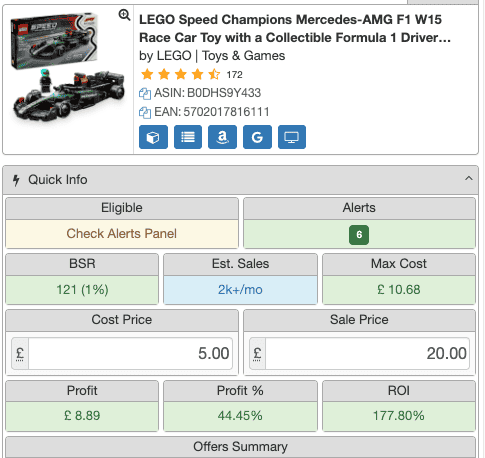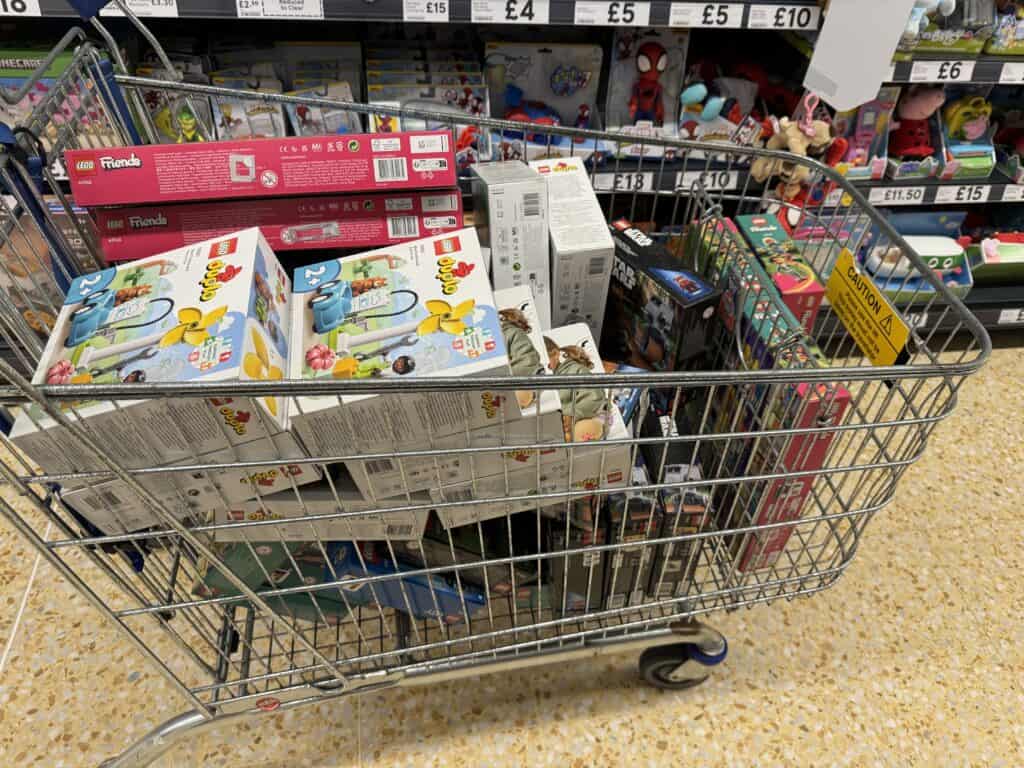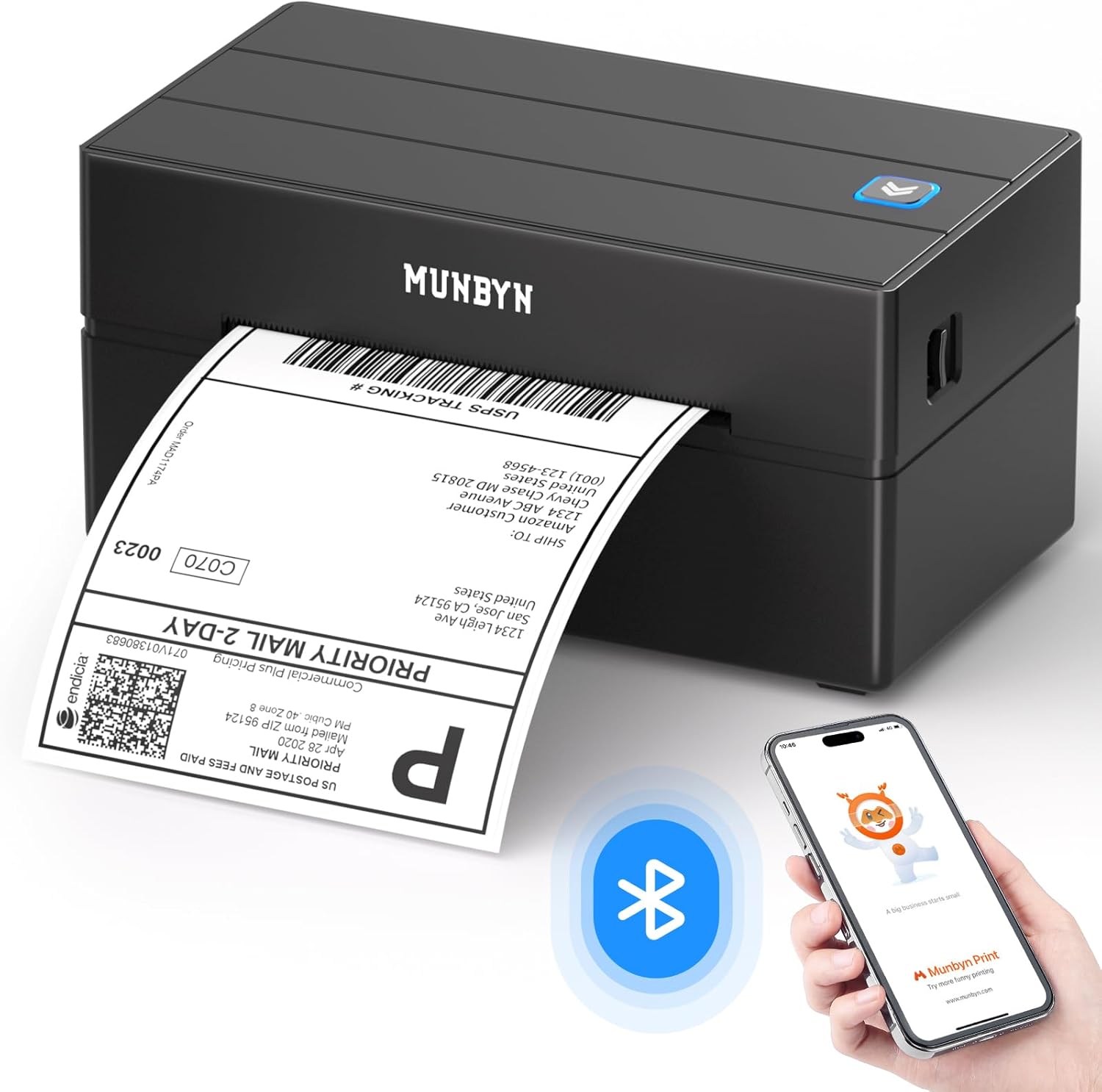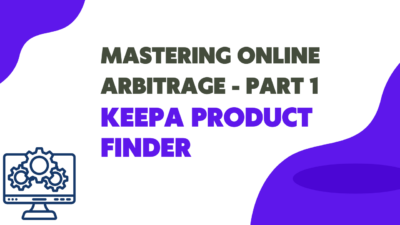Welcome to the first post in our Retail Arbitrage Series, where we dive into one of the most exciting and accessible ways to start building an online income: retail arbitrage. If you’ve ever walked past a clearance shelf and wondered if you could make money flipping those items online, you absolutely can, and this is where it all starts.
In this post, we’re going to break down what retail arbitrage is, how it works, why it’s a great strategy for beginners, and how you can start finding your first deals today.

What Is Retail Arbitrage?
Retail arbitrage is the process of buying products in physical retail stores, like Tesco, B&M, Argos, or Home Bargains, at discounted prices and then reselling them on Amazon, or maybe even Ebay, for a profit.
Here’s a quick example: You walk into Tesco and find a branded toy in the clearance section for £5. You scan it with your Selleramp and see it’s currently selling on Amazon for £20. After fees, you might walk away with a £9 profit. That’s retail arbitrage. It’s simple, fun, very profitable, and a good way to start your Amazon journey.

Why Retail Arbitrage?
Retail arbitrage is perfect for beginners because:
- It Builds Your Capital Fast: You can turn £500 into £2000–£3000 in a few months, sourcing high ROI products – Like Lego.
- It Teaches The Basics of Arbitrage: You’ll learn how to read price charts, learn what a good or bad product is, and if you make a mistake, you can always return it.
- Natural Progression: It’s the ideal stepping stone into Online Arbitrage, Wholesale and A2A.
- It can be extremely good fun, even if you occasionally get funny looks when you have two shopping carts packed full of Lego!

How to Find Deals?
There are plenty of ways to find high-return items in your local area. Here’s how to get started:
- Clearance Sections
Every major retail store has a clearance section, usually tucked away in a corner or at the end of aisles. This is goldmine territory for retail arbitrage. You’ll often find heavily reduced stock here, especially after seasonal transitions or when new ranges come in. There will also be clearance stickers built into normal sections of the shops; these are shop-specific, and I will go into these in more detail in the shop-specific posts.
2. Seasonal Offers & National Sales
Pay attention to the retail calendar. There are always patterns and sales you can capitalise on. Here are a few examples you can research or keep track of:
- Lego Sales – These happen around January-February and September-October.
- Gift Set Sales – Post-Christmas sales often include gift sets reduced by 50–70%.
- Sun Lotion Sales – These can appear at the end of summer discounts or just before Christmas.
- Electronics Events – These can appear anytime throughout the year, for example, Lidl had a sale on Daewoo toasters last September.

3. Replenishable Products
Not every good deal is on clearance. Some products sit on shelves at regular prices but sell for significantly more on Amazon. These are called “replenishables”, because you can go back and buy them again and again.
Shops like B&M, Home Bargains and Savers have many of these. Scan everything you can if you see something that looks cheap, and keep track of profitable lines.
4. Click & Collect
Some retailers allow you to buy online and pick up in-store. This is still considered retail arbitrage, enabling you to achieve more successful trips by reserving profitable stock in advance.
5. Deal Groups
Join Retail Arbitrage groups in Discord and Facebook. These groups often post live deals, and most have stock monitors. They’re a great way to speed up your learning and sourcing. Also, keep an eye on Hot UK deals, as deals can be found here as well.
Retail Arbitrage Hacks
Retail arbitrage becomes a lot more profitable and enjoyable when you move with a strategy. Here are some proven hacks to save time, boost returns, and reduce wasted trips:
1. Plan Your Route
Use an app like Route4Me to plan out your journey before you hit the road. This helps you visit the most shops in the shortest amount of time, so you get more chances at profit with less fuel and effort.
2. Create Your Own Route
Build a consistent sourcing loop in your local area, get to know which stores get deliveries when, which ones have the best clearance sections, and where the hidden gems are. Once you’ve mastered your area, expand your route to other towns and cities. The more areas you cover, the more opportunities you find.
3. Avoid City Centres
City centres may seem like hotspots, but they often have poor signal, expensive parking, and cramped shops. Instead, stick to retail parks and stores on the outskirts of towns and cities. They’re easier to access, often better stocked, and more efficient to navigate.
4. Click & Collect Route Building
Use click and collect to your advantage. Place orders online for items you know are profitable, and build your route around those pickups. That way, even if you don’t find any new deals while sourcing, you’re guaranteed to come home with a profit from your pickups.
5. Never Go Out Empty-Handed
Before you head out, try to line up at least one or two guaranteed profitable pickups through click and collect. This reduces the risk of having a completely unproductive trip and keeps your momentum and motivation high.
6. Use Stock Checkers in Groups
Many deal groups and platforms have stock checker tools that show you which stores currently have specific items in stock. These are essential for avoiding wasted trips. Use them to confirm product availability before heading to the store.
But be aware: Sometimes, items are marked as “in stock” but not out on the shelves. In these cases, speak to a staff member, as there may be extra units in the stockroom that just haven’t been put out yet. On this note, building up connections in shops is also a great idea.

Pros & Cons of Retail Arbitrage
Like any reselling model, retail arbitrage has its strengths and weaknesses. Here’s a breakdown of what to expect:
Pros
- Higher Margins & ROI – Many retail arbitrage finds have significantly higher returns compared to wholesale or online arbitrage.
- Fun & Rewarding – There’s something exciting about scanning an item for £3 and finding out it sells for £20 on Amazon.
- Ridiculously Cheap Deals – Nationwide clearance events (like post-season sales) can lead to serious profits. If a product is reduced everywhere, you can clear up across multiple stores on your route.
- Learn the Ropes – It’s a hands on way to understand the fundamentals of sourcing, pricing, sales rank, prep, and logistics.
Cons
- Receipt Issues – Amazon doesn’t always accept receipts from high street stores, especially in the case of authenticity claims.
- Hard to Source Large Quantities – Unlike online or A2A sourcing, it’s difficult to get volume stock from retail arbitrage alone.
- Time Consuming – Driving, scanning, prepping, and listing all take time, and you can’t do it in your pyjamas!
- Hardest to Scale – It’s still scalable, but out of all the models, RA is the most difficult to systemise at large scale.
What Shops Can You Cover with Retail Arbitrage?
You can technically do retail arbitrage in any store that provides a valid receipt and is a recognised retailer. Throughout this series, we’ll break down the most common stores one by one, what to look for, when to visit, and how to spot the hidden profits.
Here’s a list of some popular RA stores to get you started:
- Sainsbury’s
- Tesco
- Asda
- B&M
- Home Bargains
- Savers
- Superdrug
- Boots
- Hobbycraft
- TK Maxx
- Currys
- Sports Direct
- Game
- The Works
- W.H. Smith
- Morrisons
- Waitrose
- Aldi
- Lidl
- Smyths Toys
- Homesense
Note: I recommend avoiding charity shops for Amazon arbitrage, as you are asking for trouble!

Final Thoughts
Retail arbitrage is a brilliant way to start your reselling journey, especially in your first 6 months. It allows you to build capital fast by flipping high return investment items with minimal startup costs.
As a beginner, if you’ve got a small amount of capital, retail arbitrage should definitely be in your toolbox. You’ll learn sourcing, product analysis, prepping, and selling, all skills that will benefit you as you grow.
After six months to a year, you may want to phase it out or reduce your focus, unless it’s Q4. During the fourth quarter, retail arbitrage shines. Seasonal demand, Christmas, and last minute buyers make it one of the best times to go all in.
If you’re serious about building a reselling business, start with RA, master the basics, build your cash flow, and then scale from there.




